The Article
Lenco L-3808 Turntable: Direct Drive on a Budget
24th May 2017
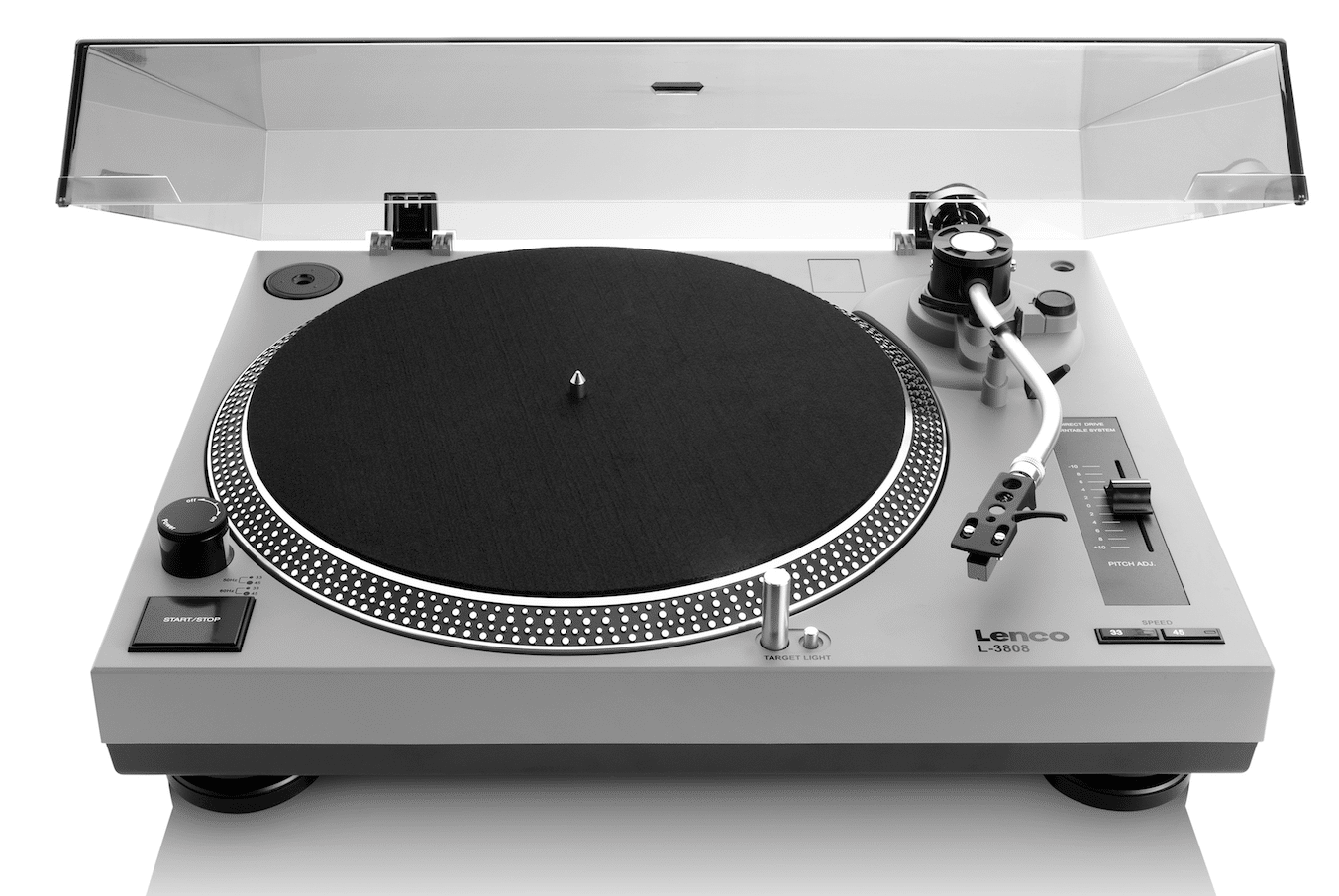
Want to go direct drive but are afraid of the expense? Lenco might have a surprise for you. Paul Rigby reviews the Lenco L-3808 (and provides a money off deal: see the end of the review)
Right, take a quick look at the price point below and then take a gander at the images and you just know that Made In China or similar is hidden somewhere within the chassis of this Lenco design. At this point the analogue snobs will lift their nose and leave the room. Still here? I’m glad, because this little turntable has a few surprises in store.
But what about that strobe light and pop-up light (for DJ use) that will immediately warn you that this might be a sad little Technics 1200 rip off? In this case, first impressions are very wrong indeed (although the turntable is recommended as an effective budget DJ tool, that’s true).
The construction is relatively solid for this price point with an all up weight of 5.4kg (the competing Dual MTR-75 weighs in at 4kg, for example).
The unit arrives with a dust cover but I would recommend removing it during play to avoid noise from its rather shaky mounting. By all means put it back, in place, when your listening session in over to protect from the dust.
The S-shaped arm looks and feels flimsy and small but it is secured well with an arm lock to prevent accidents. At the end of the arm is a removable headshell containing a standard (for this price) Audio Technica AT-3600 cartridge which Lenco asks you to run at a tracking force of 2g. Interesting because Dual, via its MTR-75 turntable, requests that you run exactly the same cartridge at around 3.25g! I know which one I’d rather place in my vinyl grooves! If you do buy yourself this deck, upgrade to a better cartridge ASAP. Something non-conical too which will enhance detail retrieval and the sonics immeasurably.
A manual turntable, beginners will be happy to see an arm lift which worked easily and well. An included moving magnet phono stage (which appears to be similar to that featured in the Dual MTR-75) is fitted within the chassis to save costs and to enable you to connect the deck to an amplifier’s line input or powered speakers. It can be switched to accept an external phono amplifier too, something that I would highly recommend as soon as you can afford one to further increase sound quality. A USB digital output is also present that can be used with the included Audacity music editing software to enable digital recording of your analogue discs. A mains cable is pre-fitted to the turntable.
IN USE
I found that, playing the turntable at 33.33, I did have to move the pitch adjustment just a tad from the default ‘0’ postion, to correct a slight speed drop.
OK, there’s no quartz control connected to the direct drive motor here, so you can’t expect nailed on speed control but it ain’t too bad once you get to grips with the pitch adjustment. The 8-pole, 2-phase design does a decent job considering the price.
Apart from that, the Lenco sprang into life without any issues.
SOUND QUALITY
I began the sound tests playing a selection of the 80s minimalist synth outfit, Bizarre Unit, combining vocals, sparse early synths with organic instruments
One of the principle failings of the budget turntable – even more so the sub-budget table – is how very much out of control it is in terms of assembling and presenting diverse frequencies to your ear. Just about everything that can go wrong normally will: blooming bass, smearing midrange and faltering stereo image with a flat soundstage and no character to any of the instruments. The Lenco addresses many of these failings from the core of one single feature: it’s direct drive motor. This single, yet essential, feature gives the turntable that one essential weapon in its sonic armoury, control. Because of the direct drive motor, there is far more focus and precision in terms of overall presentation than you would normally expect at the low, low price point.
Apart from the stereo image being rock solid and central, the bass was noticeably heavier than normal with a heft and weight that added significant presence to the entire track. Drums were meaningful and full of character, giving a foundation to the music that moved it forward at a steady pace while the midrange was, for the price, so accurate it actually created air and space in the soundstage, allowing more vocal reverb to be ‘visible’. This accuracy also infused the electric guitar with a sense of extra speed, as the transient performance improved immeasurably. The bass guitar also had more form and character. The vocals – both male and female – exuded emotion but also the delivery provided new details and nuance while the synths stopped spewing their smearing frequencies over everywhere and kept themselves to themselves. They no longer tried to mask subtle details, giving the music a richer flavour.
I then moved to the jazz vocal of Gogi Grant and the track By Myself, from the 1960 LP, Granted It’s Gogi on Living Stereo.
Grant’s wide ranging and dynamic vocal needs space and air to expand into and the Lenco, considering it’s low price point, certainly offered that. Grant fairly sparkled into a stereo image that pushed backwards as a 3D effect, allowing her big band orchestra to play around her. The focus upon her vocal allowed the ear to follow each element of her delivery with some ease.
The brass offered no brightness or stridency but, instead, had a texture through the vibrational effects of the performance giving an admirably brassy tone to this section of the backing band while keeping a measure of reverb to add energy to its effect.
Bass, from this direct drive, bounced and responded splendidly. The double bass having a notable sense of power and control on the early parts of this track. Percussion was particularly successful off this track. Partly, because the precise treble performance allowed the cymbals to offer both delicacy but also accuracy.
CONCLUSION
It’s not perfect – how can it be at £200? This is a sub-budget design so the myriad of tiny design quirks can and should be forgiven. The sound quality, meanwhile, is absolutely superb. A real shocker because it really shouldn’t be at this low, low, price. The Lenco is a solid (in plastic terms, at any rate), great sounding and easy to use turntable. A top class budget performer and a brilliant choice for anyone wanting to enter the vinyl fray.
LENCO L-3808 TURNTABLE Price: £200 Tel: 0333 1234 603 Website: www.lencouk.com TO BUY CLICK BELOW: UK - https://amzn.to/35TNWIA EUROPE - https://amzn.to/35ZtSV4
GOOD: precision, focus, ease of use, bass, price, direct drive
BAD: slight initial speed adjustment required
RATING: 9
REFERENCE
Dual MTR-75 turntable
Trichord Dino phono amplifier
Rega Brio-R amplifier
Spendor S3/5R speakers
Tellurium Q cabling
Harmonic Resolution Systems Noise Reduction Components
All vinyl was cleaned using an Audio Desk’s Ultrasonic Pro Vinyl Cleaner

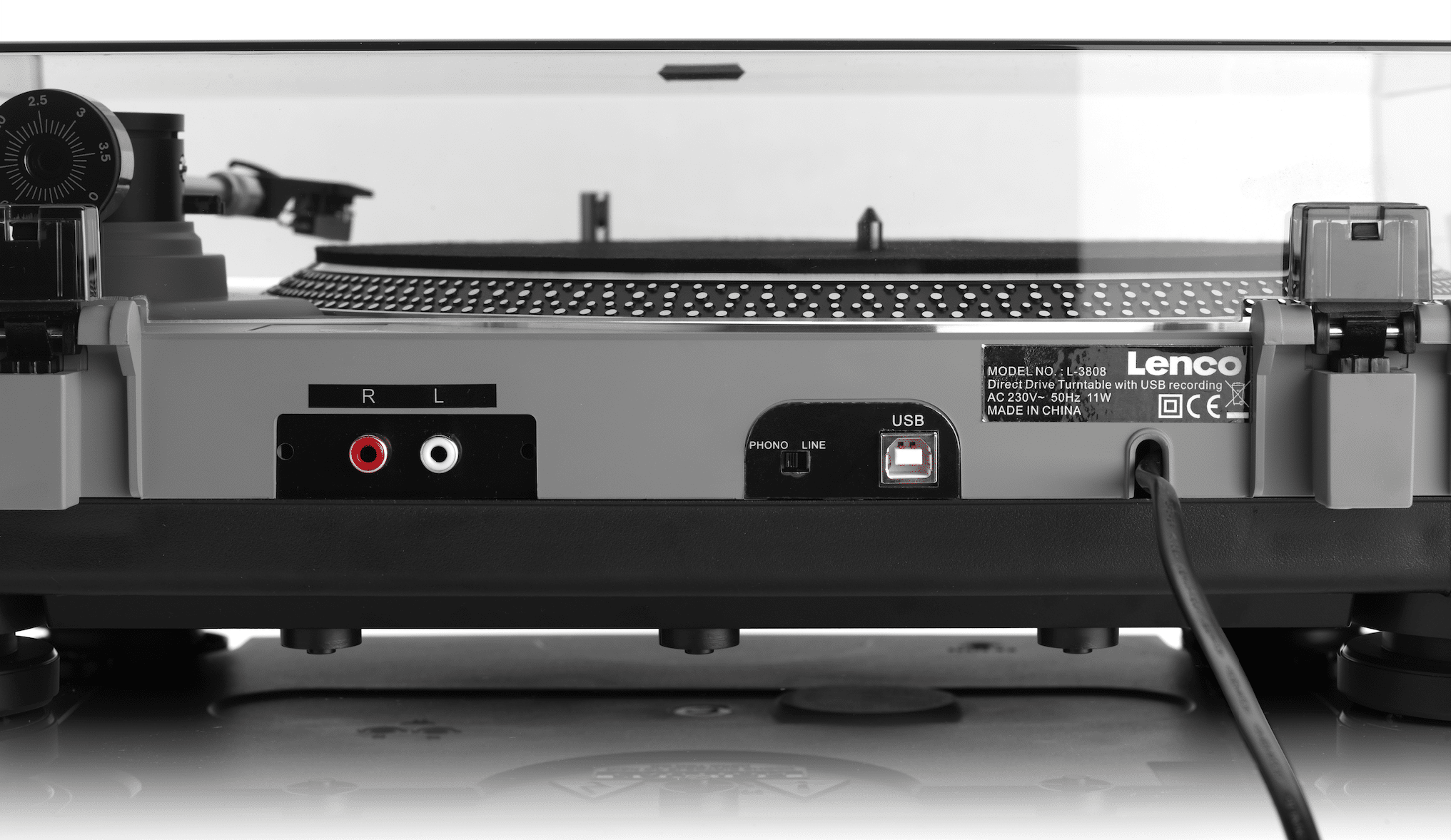
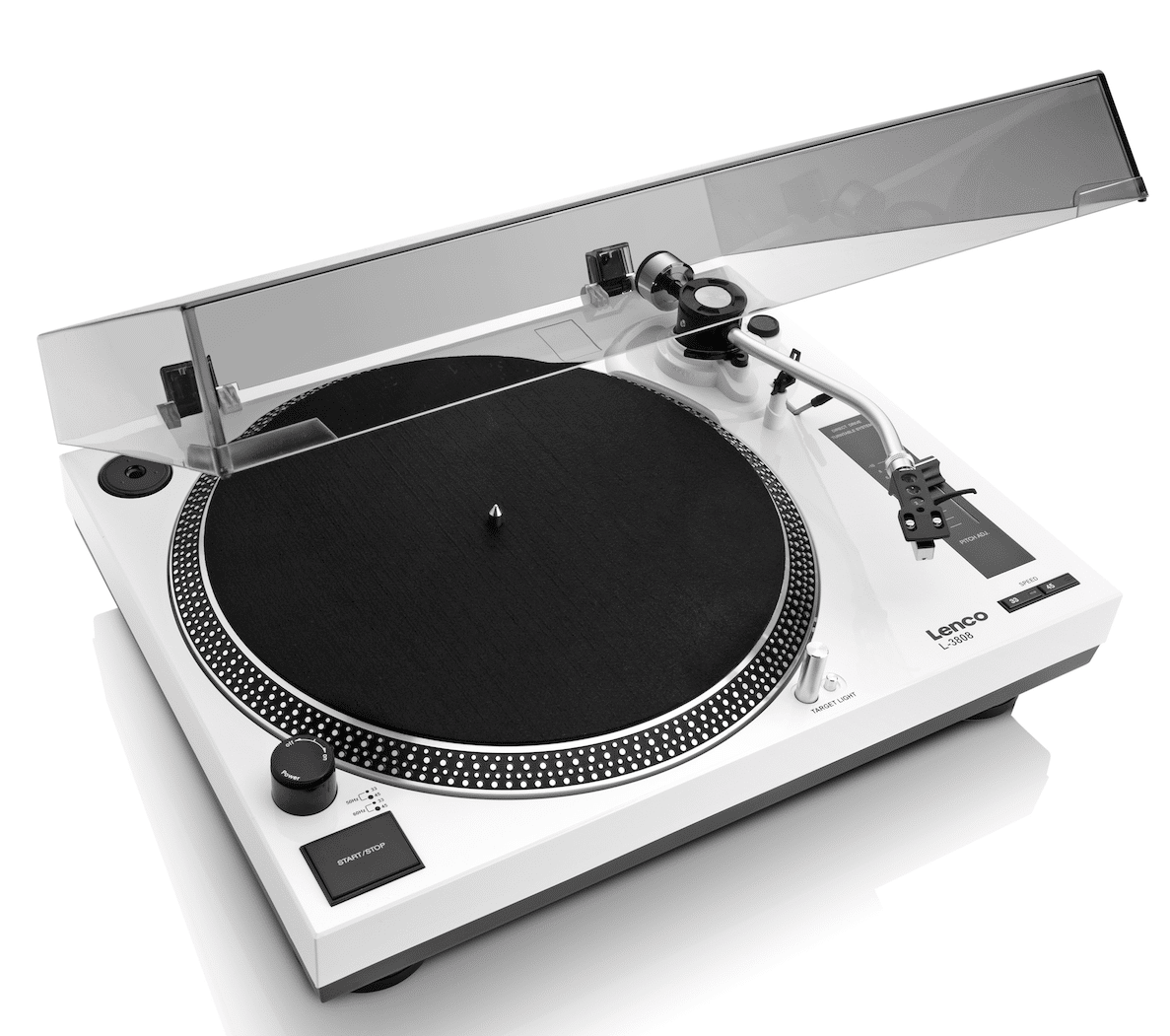
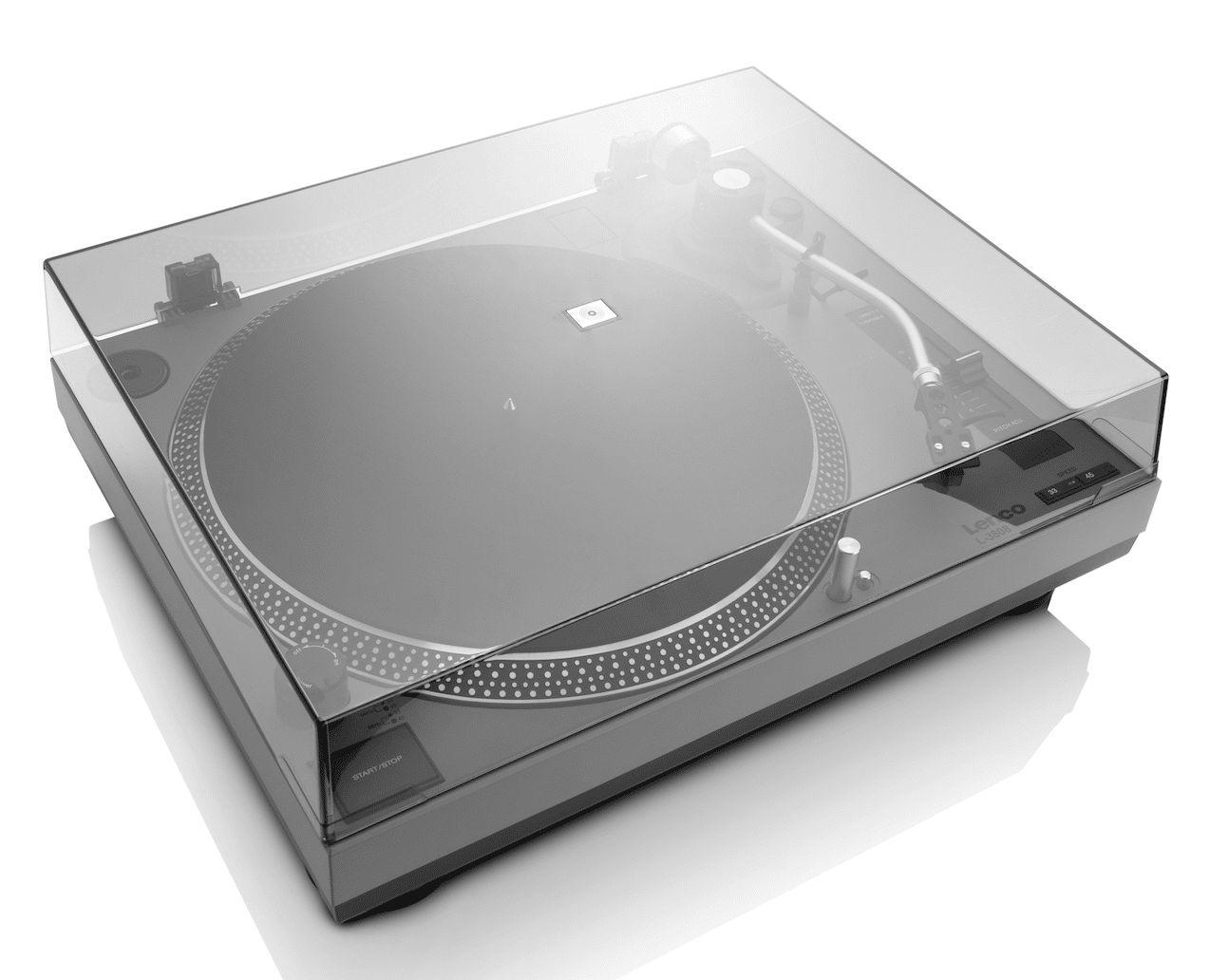
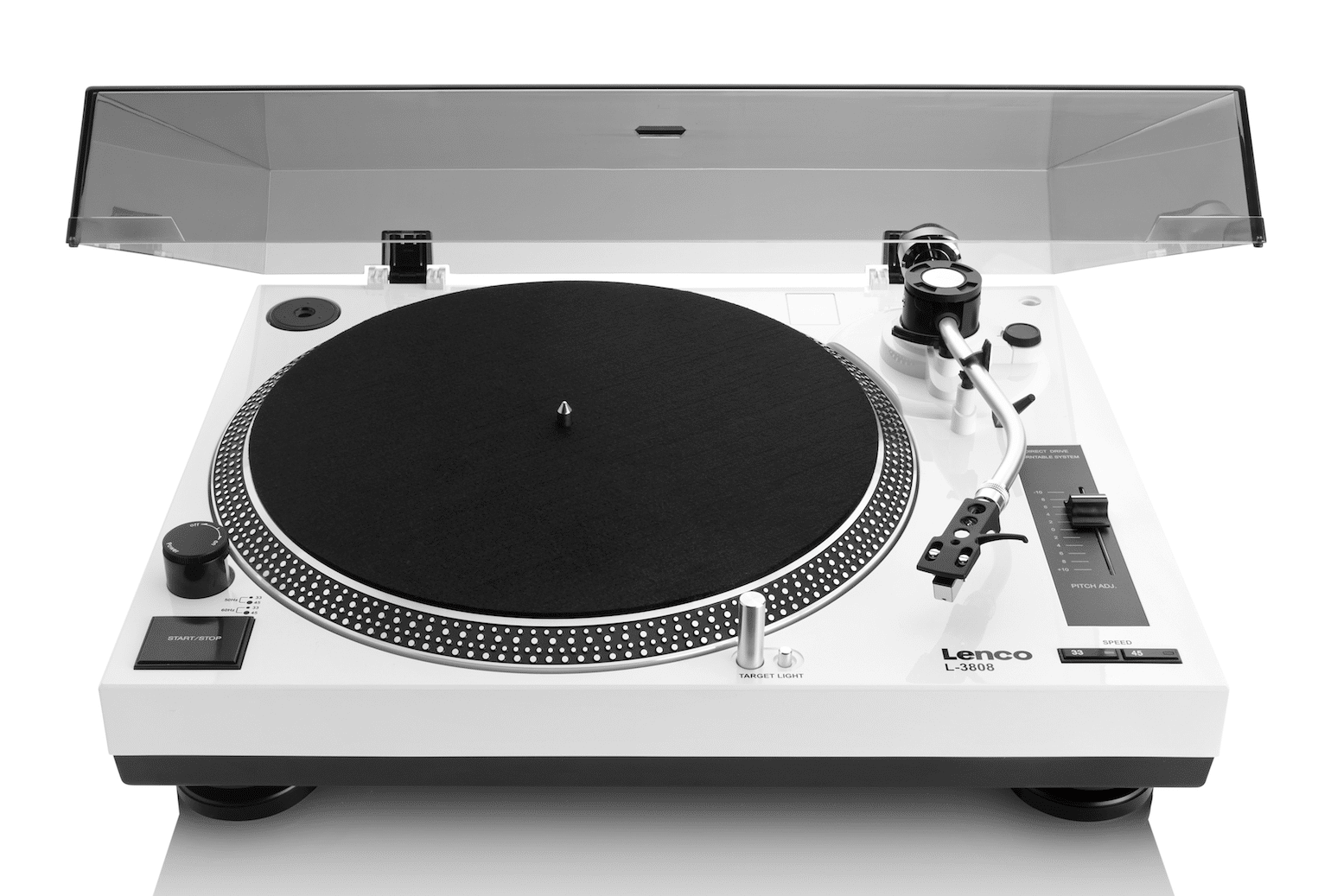
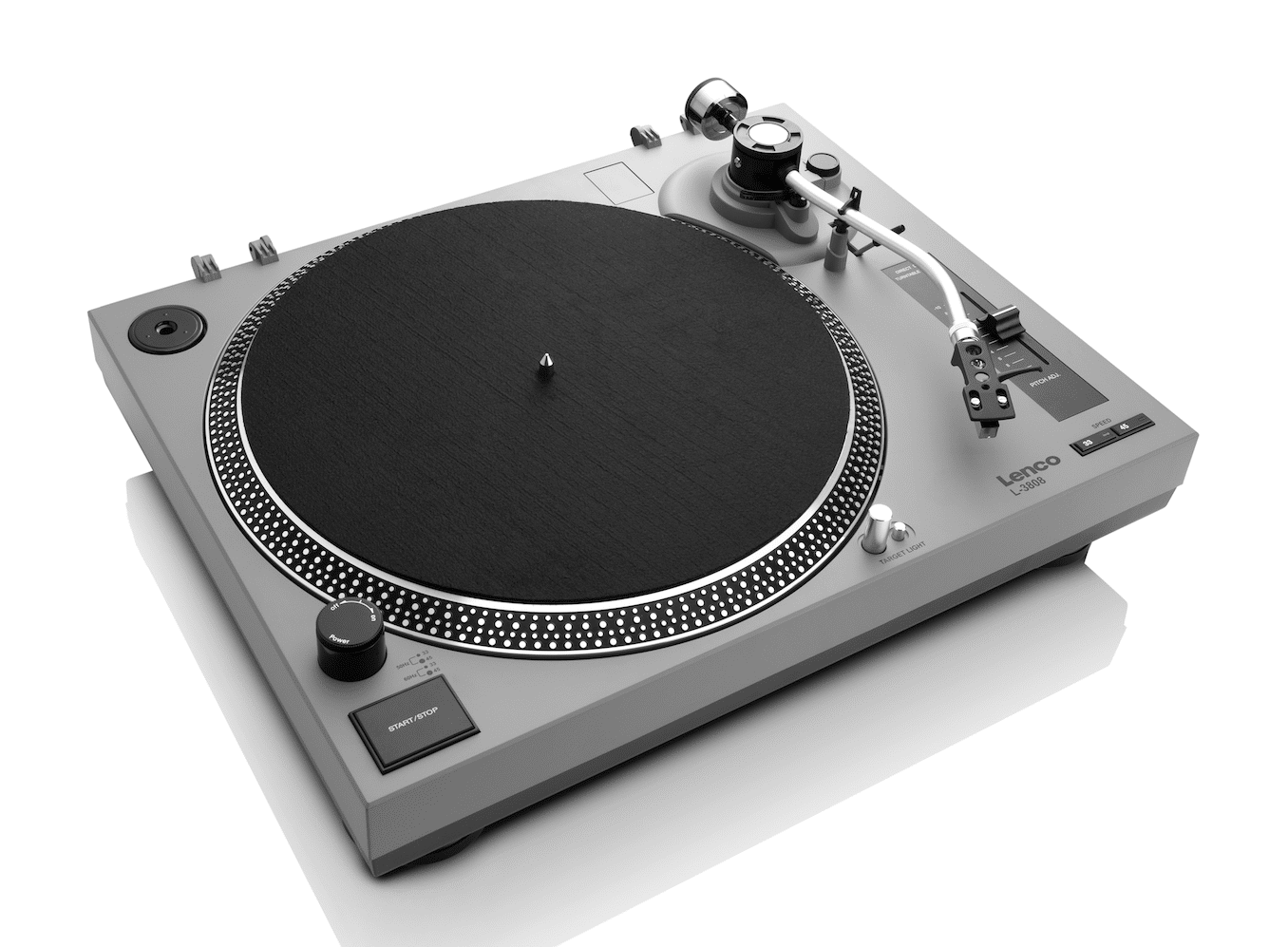


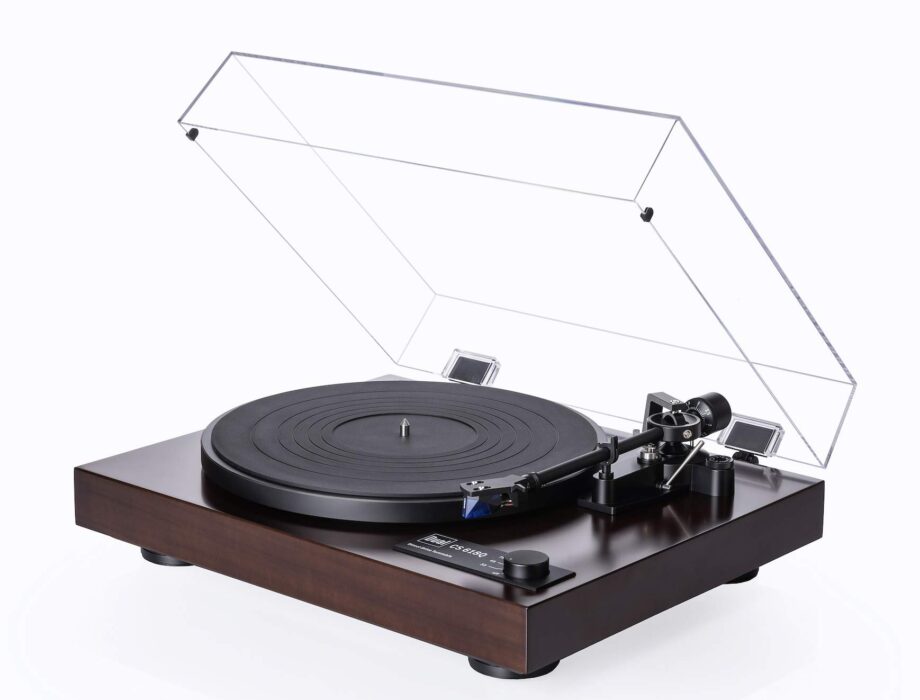
https://www.artsound.gr/catalog/kebo-2000-servo-mode-2000va-p-22586.html
do you know if something like that helps in this case?
For more value products, I would look here: http://www.russandrews.com/russ-andrews-mains-conditioners/
Hi Paul, I’m completely new to getting a turntable and vinyl but am looking at getting the L-3808 after reading your review. I’ve also noticed you recommend the Roth oli Ra2 speakers (they’re a good price point for myself) – with this combo would I also need an amp or would the turntable’s preamp suffice? Any advice is greatly appreciated!
Hi Chris – the deck features a phono amp inside so you’re sorted. The speakers feature a main amp inside there, so you’re sorted there too. All you need to do is plug and go! 🙂
Later on, if you ever want to upgrade, give me a shout.
Hi Paul,
your fine review made me enthousiastic to go and look for this turntable. Doing so, I also came across an Omnitronic DD-2550 USB for €165 and an Eagletone ONEONE USB for a mere €106 on Amazon.
Should I consider buying one of these, or just go for the Lenco L-3808 ?
I will not be using it for dj-ing. Only for listening my old recorrds at home and digitizing some of them.
From my early years I still own a Stanton 681EEE element. (at that time top of the bill)
I thuik its condition is still okay. Maybe I can use it to upgrade one of the above turntables?
Thanks in advance for your advice!
Thanks for the question, Sjaak – stick with the Lenco, at least I’ve actually reviewed that one and can vouch for it. Then seriously consider upgrading the cartridge to improve sonics further.
Thanks for your answer, Paul!
About upgrading the cartridge:
do you think I can use my old Stanton 681 Triple E ? (it still sonds good)
In the early days my catridge was premium class.
Right now I have no budget to buy an expensive premium catridge, so I hoped my old one might be better than for instance a modern budget type like f.i. the Audio Technica AT95E.
Or are the modern cartridges better than the old stuff?
Yes, Sjaak, by all means use your Stanton.
hello paul.i compare the specification of at 3600 and at 95e and its pretty much the same.i wonder if it is
possible to just use an elliprical stylus on at 3600?
I have yet to try it but here it is ioannis: https://www.amazon.co.uk/ELLIPTICAL-UPGRADE-Technica-ATN3600-ATN3601/dp/B01JJ73UP6
If you do try it, can you report back on your findings please?
Does the anti skating actually work? Youtube is full of videos of the AT120 (another Hanpin product) showing how the spring in the anti-scating mechanism is so long/weak that is has almost no effect at all.
Hi Erik – it did for me. I never had an issue with it.
Hi Paul,i am a beginer in the world of turntables and naturally have some doubts.I want to buy one and i’m yet to decide,i’ve been researching for some (sub-budget) options and finally have three candidates. 1- Sherwod PM-9805 (found on sale for 139‚Ǩ on a website,179‚Ǩ at amazon), 2- Lenco L-3808, 3- Dual DTJ 301.1 USB. All have similar prices and generally very good reviews for its range, i have to make a final decision and would be great to read your impressions and suggestions. Thank you so much and sorry for my english, greetings from Spain!
Hi Jose
Thanks for your question. The Sherwood looks like a typical Chinese belt drive build while the Dual looks exactly like the Lenco. For Chinese built models at this price point, I find that direct drive turntables offer better stability and focus. Because I have not seen the Dual up close and cannot say if there are any minor changes good or bad, I would recommend the Lenco. At least I’ve looked carefully at it and can vouch for that model. I hope that helps.
Thank you so much as been a great help!
Mt pleasure Jose 🙂
Hi Paul, finally i buyed the Lenco L-400 BK wich is the same model in black. But i have a problem adjusting the anti-skate, i set the same value as the stylus pressure (2) but the tonearm doesn’t remains still and moves to the centre. I change the value but nothing changes, i think i’m doing something wrong (i don’t know if this has to do because the stylus pressure adjustment isn’t right, sliding and screwing counterweight onto the tonearm operation is wrong). I’m really a novice on this so i hope having your help.Thank you!
Hi Jose – thanks for your question. The possibility is that the anti-skate is faulty which will require you calling your supplier for a new turntable. Before you do that, though check a few things.
Firstly, double check the tracking force on the cartridge and make sure that it’s correct. In fact, what is that figure and what is the anti-skate figure?
Is the stylus absolutely clean? A dirty stylus can lift out of the groove and ‘skate’ across the vinyl.
Is the turntable on an absolutely level surface?
Might sound silly but you might try turning there anti-skate all the way to its end stop clockwise, then anti-clockwise, then repeat two to three times. Sometimes this can help the anti-skate to catch but we’re talking long shots if you get down to this option.
There is one more long shot and it’s this: I reviewed the L-3808 and found that 2g tracing force was best. The L-400 is basically the same deck but there may be minor changes in terms of tooling which might affect the tracking force. Firstly, what cartridge type is used on the L400? Can you find out? That might have changed. It might be an idea to up the tracking force. I can get this effect even on expensive carts where the cart really needs a greater tracking force. So, increase the tracking to 2.2g, the 2.4g…and so on. Take it to 3g as a max. Hopefully, it’s will sit in the groove before you get to 3g.
Hi Paul after a few attempts(using a cd) finally seems i got it, the thing is that the tonearm remains still almost to value 1(both stylus pressure and anti-skate).During some attemp, when it is stopped after place it on the cd suddenly moves a little way to the center( never did it to the outside even trying all the values, is it normal? ) but inmediatly it stops, i hope is not a relevant thing.
The cartridge is an AT3600L and the recommended value is 2g, is it strange that it works for me on value 1?.
Excuse me if it’s a silly question but should i repeat the operation when i place the turntable on it’s own table? I hope the stylus won’t skate across the vinyl.
Thank you for your patience and sorry for my english!
You’ve got me a little bit confused with your CD references Jose. Do you mean that you’ve placed the stylus on top of a CD to test the anti-skate? If so, that test is a new one on me 🙂
I’m pretty sure that the 3600 has a sweet spot tracking force of 3g. You might want to try that. When I tested the 3808, I found the best tracking force was 2g. These things are not set in stone and are pretty flexible. As I say, I wonder if the turntable has received any minor build changes which has affected this area in its change to a 400 model. Try the tracking force in gradations up to 3g and go to 3.5g if necessary, the cartridge design can handle it. then get back to me (do you have a tracking force gauge?). I wonder if the issue is less the anti-skate and more cartridge mis-tracking.